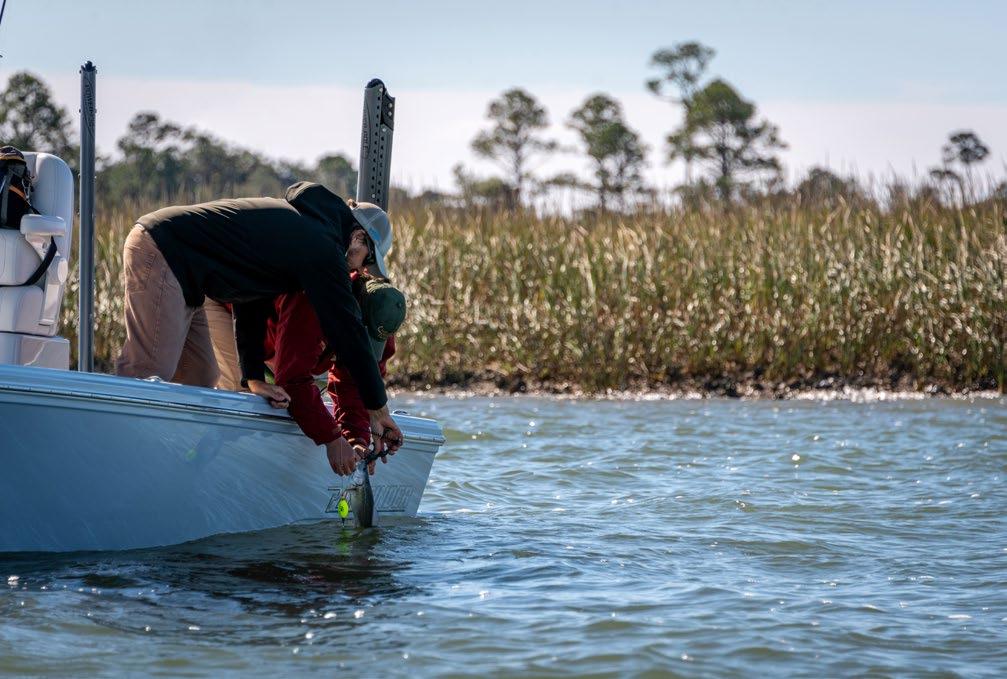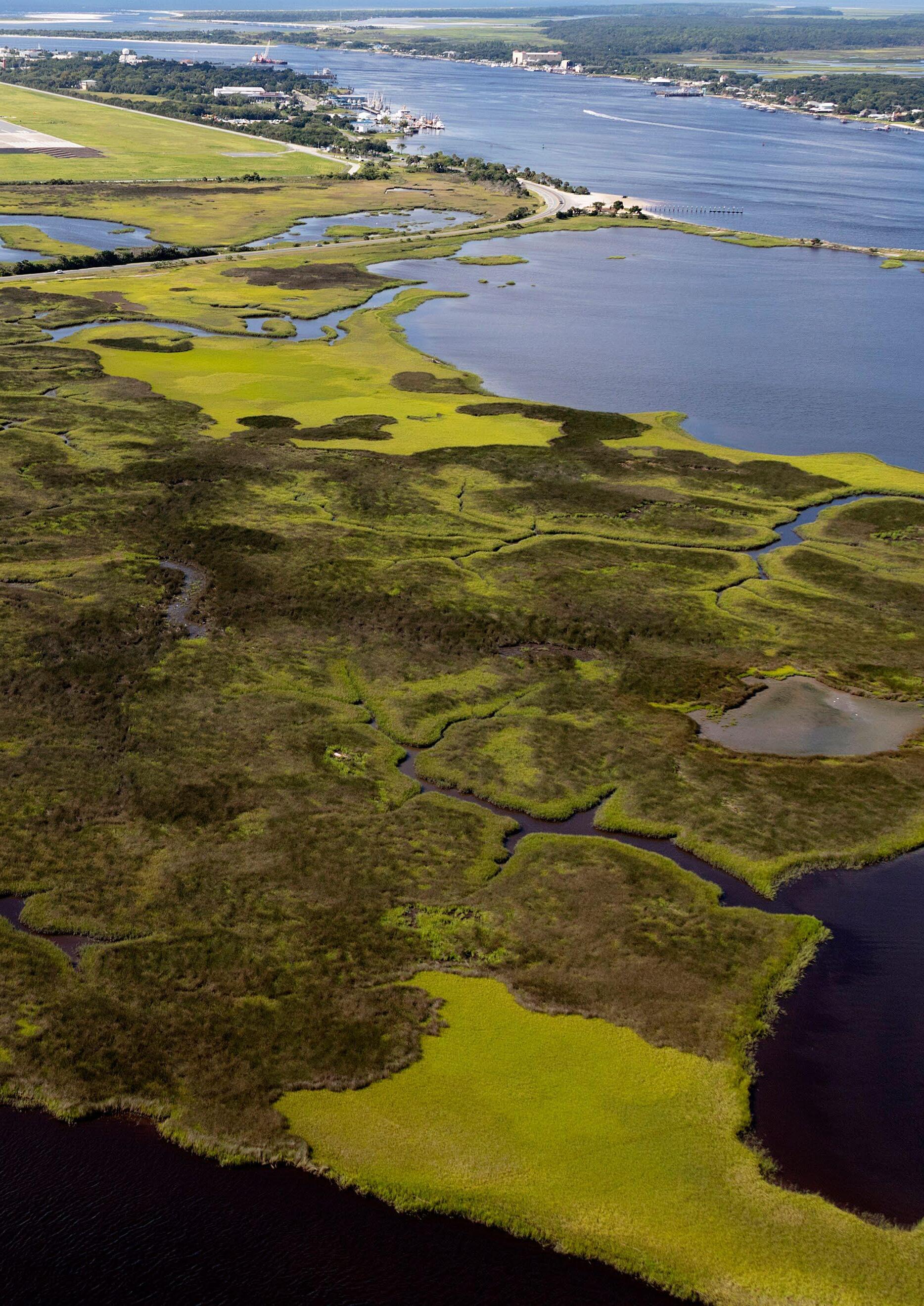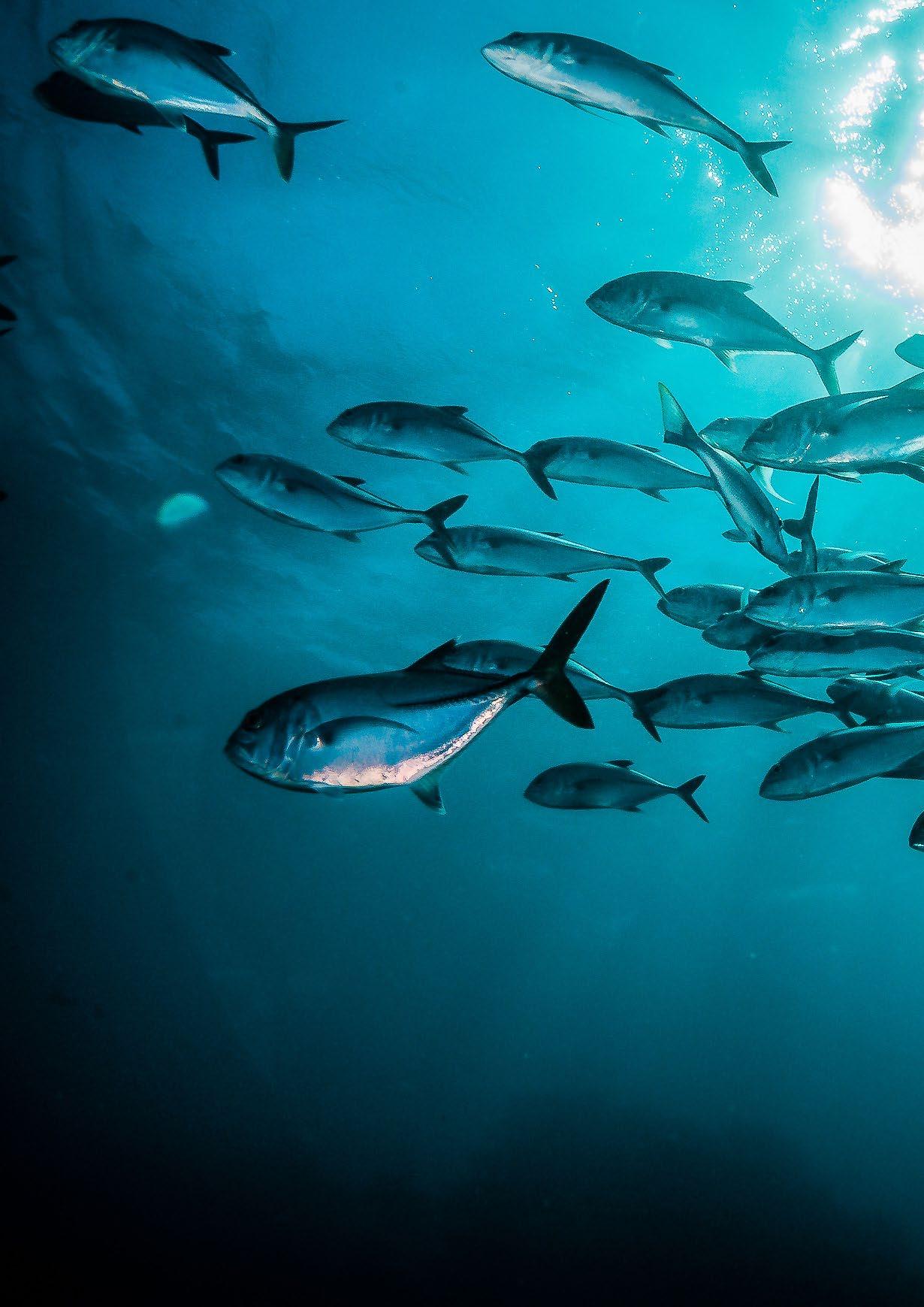
4 minute read
Saving a Coastline: The South Atlantic Salt Marsh Initiative
Written By | MARTYN SHUTTLEWORTH
Bringing groups together is often one of the best ways to protect fragile environments like salt marshes. We talked to Lora Clarke, of Pew Charitable Trusts, about how her love for the local coastline inspired the South Atlantic Salt Marsh Initiative.
Advertisement
Would you mind telling us about your background and work with coastal habitats?
I have spent my career advancing science and policies to better protect and manage our ocean and coastal resources ranging from fisheries to oysters to salt marsh. Now, as an officer at The Pew Charitable Trusts, I am helping to lead efforts to work with partners across the region to launch the South Atlantic Salt Marsh Initiative and implement our new regional plan.
Could you tell us a little about your attachment to the area – what does the coastline mean to you?
Growing up near the Chesapeake Bay in Virginia, the coast has always been a huge part of my life. As a child I spent my days digging in the sand trying to catch crabs and swimming in the ocean looking for fish. The summer before starting fourth grade, I asked my mom to sign me up for a summer camp on “Estuaries” at our local Mariners’ Museum and I’ve been hooked on this career path ever since.
Why are saltmarshes important? Who/ What relies on them the most?
Salt marshes are the ecological guardians of our coast. They provide a wide variety of benefits ranging from habitat for fish, birds, and other wildlife to protection from storm surge, erosion, and coastal flooding. In fact, one acre of salt marsh can absorb up to 1.5 million gallons of floodwater. During storms, by absorbing floodwater and wave energy, salt marsh can decrease adjacent property damage by up to 20%.

Increasingly powerful storms are devastating our coasts. We need to look for solutions, and nature can provide a great defence. Salt marshes can absorb the power of waves, helping to reduce erosion and strengthen our shorelines. They’re delivering protection for our communities and military installations while providing places where people can fish, boat, kayak, go birding and enjoy nature.
If you love seafood, you can thank salt marshes. The things we love to eat – blue crabs, shrimp, flounder – they all grow up in the marshes. They’re nursery grounds for more than 75% of our commercial and recreational fish species in the U.S.
What are some of the problems faced by the local coastline and why do you think preserving saltmarshes will help?
Salt marshes are threatened by rising seas, polluted runoff, and unsustainable development, but we have an opportunity now to protect their future. As sea level rises, the marsh will naturally move inland – a process we call marsh migration – as long as it isn’t blocked by physical barriers or steep changes in elevation.
We think of habitats as staying in one place, but marshes are on the move. And if that movement is blocked by buildings, roads, or elevation changes the marshes will drown as the ocean moves inland. as I eat fresh seafood from the marsh, and I often spend my weekends enjoying activities in the marsh. It’s an important part of our culture here.
There’s a lot riding on our salt marshes – from supporting wildlife to protecting coasts. But you may not realize how many businesses make money from tourism, fishing and all the other activities that involve the marshes. It’s a smart money move to protect this economic asset.
The initiative has been a collaboration between many groups. Which groups and how did you bring them all together?
The strength of the South Atlantic Salt Marsh Initiative is the many partners it brings together for a common goal – protecting more than 1 million acres of salt marsh that stretch from North Carolina to east-central Florida. It brings together federal agencies, including the Department of Defense, state natural resource agencies, local governments, the Gullah/Geechee Nation, fishing organizations, conservation groups, private landowners, and more. We knew people would want to join this effort. It’s a win for everyone – nature, the military, communities, and coastal economies.
What were the major challenges?
What inspired you personally to set up the Salt Marsh Initiative? What was Pew’s role?

A few years ago, as Pew began to expand our portfolio to include coastal habitats around the nation, we focused on learning more about salt marsh. We wanted to understand the status, benefits, and threats to this great habitat. As we talked to experts and met with communities, it became clear that in the South Atlantic, we have an opportunity to protect one of last vast stretches of salt marsh in the United States. We have over 1 million acres of relatively healthy salt marsh that is an integral part of the culture and way of life in the region. We realized how special this place truly is and decided it was time to act.

By partnering with the Southeast Regional Partnership for Planning and Sustainability (SERPPAS), we were able to use their landscape scale initiative for longleaf pine as a model to bring together federal and state natural resource agencies, as well as a variety of other partners, to develop a plan to ensure this habitat persists into the future.
I’m personally very invested in the success of this initiative because I’m fortunate enough to live in Charleston, South Carolina – a coastal city surrounded by this vast salt marsh. I pass the marsh each day as I drive, enjoy the view from restaurants
The salt marsh provides tremendous benefits to diverse groups of people. And while we’ve worked really hard to ensure we have as many voices represented as possible, there is still more outreach to do to reach more groups.
In this region, we are fortunate enough to be surrounded by a vast, healthy salt marsh ecosystem. We often find that some folks don’t realize that other areas aren’t as fortunate and the decisions they make today will impact whether this habitat exists for future generations.
What did you learn and how can this become a template for other areas – in the US and elsewhere?
SASMI derives its strength from its diverse partners and perspectives --from communities and governments to scientists and conservationists -everyone has a reason to protect the future of our salt marshes. Bringing diverse stakeholders together for a common cause is a model that can be used for other landscape scale efforts around the US and the globe. It’s important to bring as many stakeholder groups as possible into the process early to ensure their voices are heard, and the initiative is something that truly represents a variety of interests. That’s an important part of the recipe for success.










